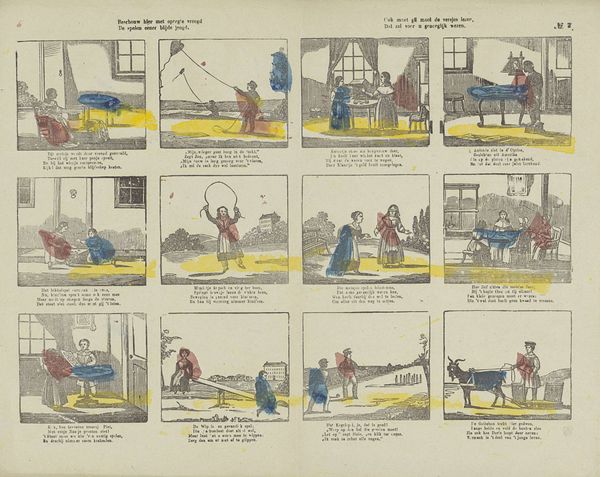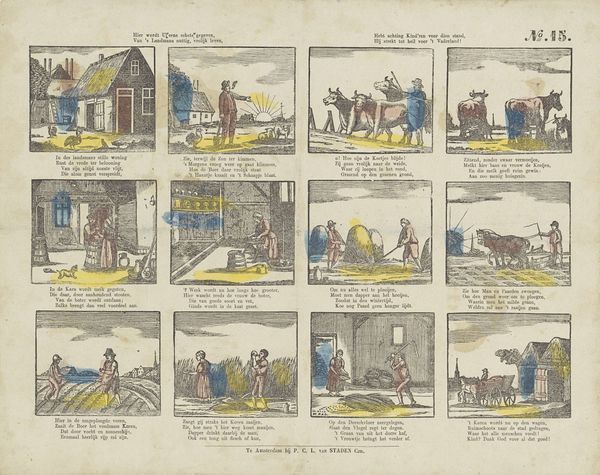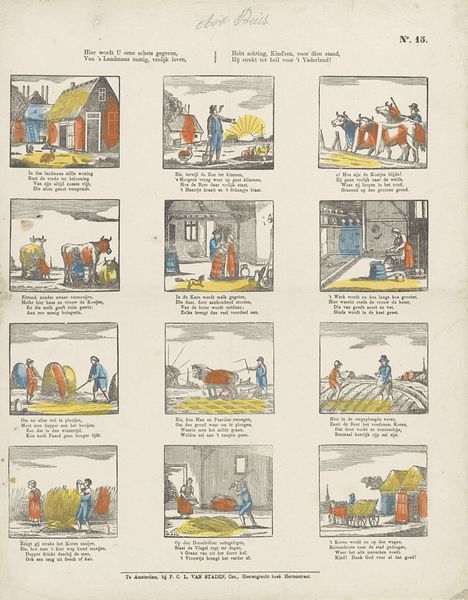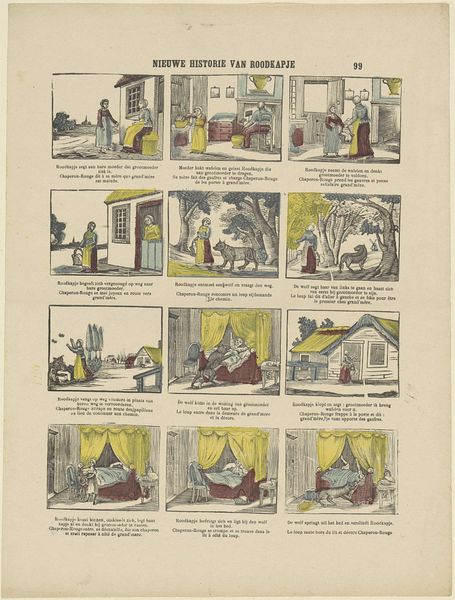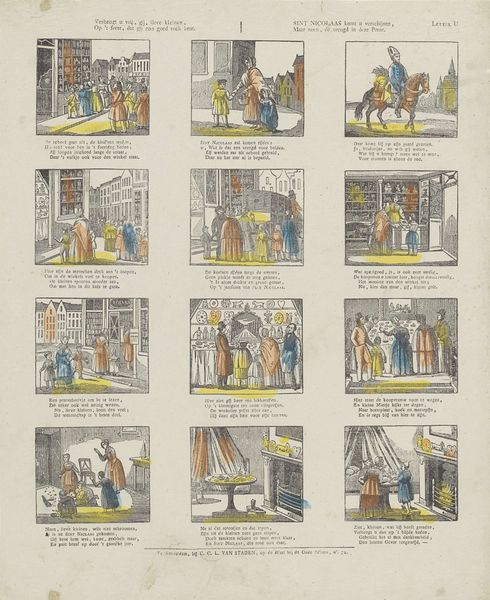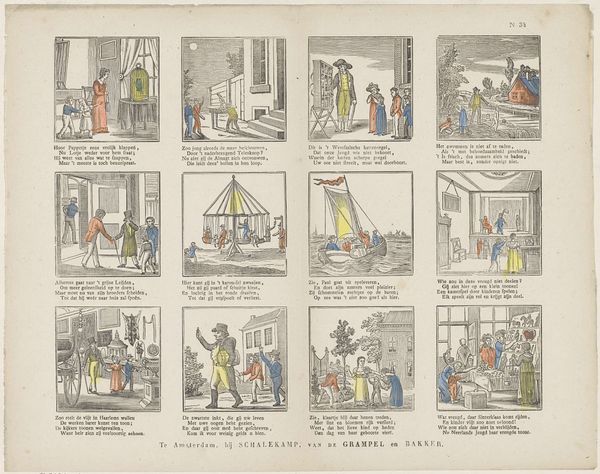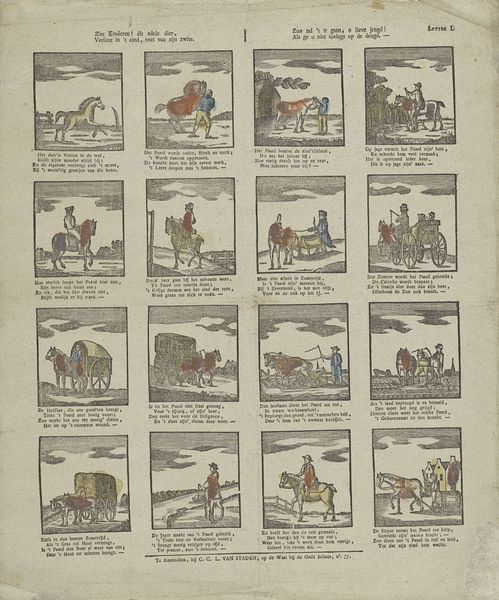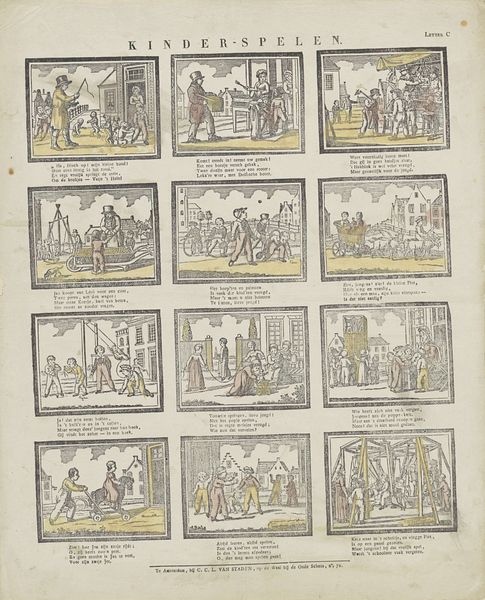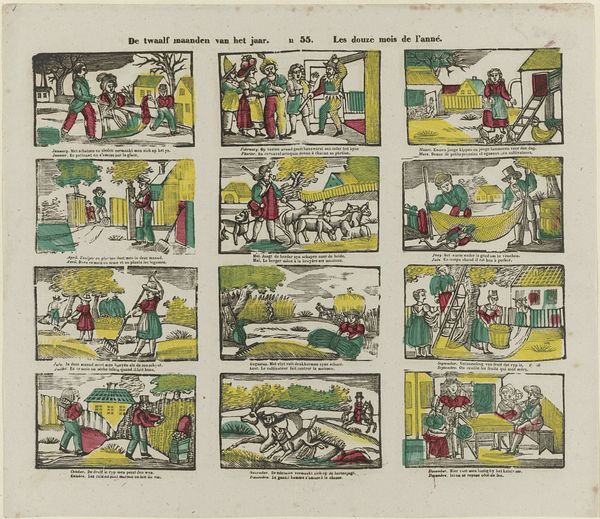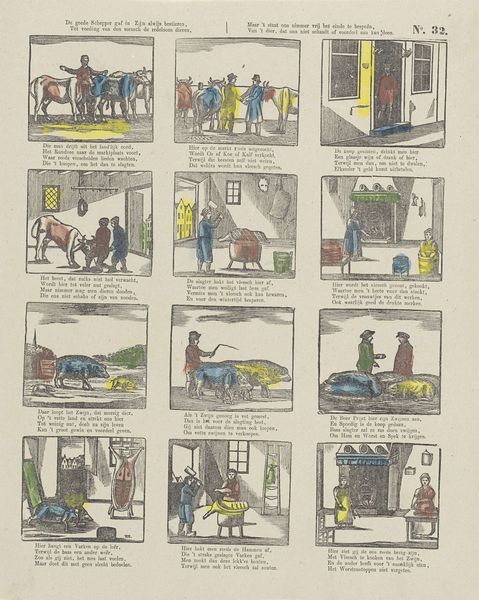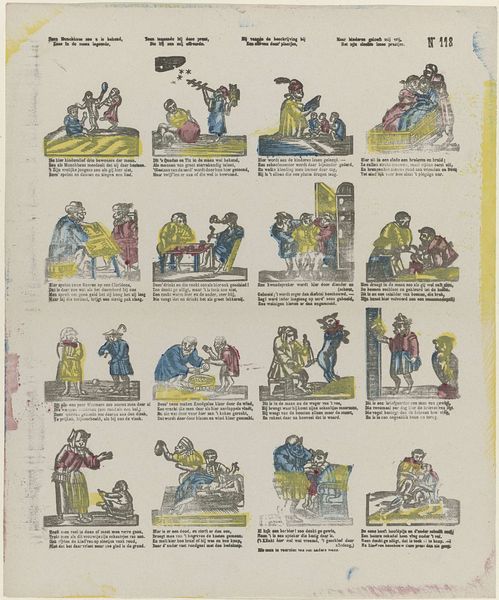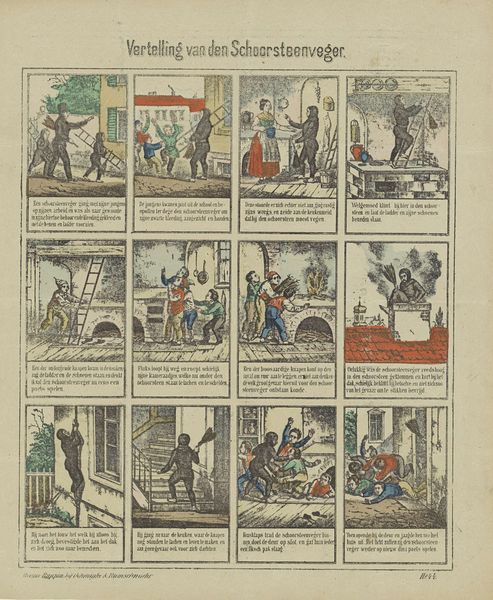
Hier wordt u eene schets gegeven, / Van 's landsman nuttig, vrolijk leven. / Hebt achting, kind'ren, voor dien stand, / Hij strekt tot heil voor 't vaderland! 1850 - 1870
0:00
0:00
print, engraving
#
narrative-art
#
dutch-golden-age
# print
#
landscape
#
genre-painting
#
engraving
Dimensions: height 295 mm, width 372 mm
Copyright: Rijks Museum: Open Domain
Editor: This is an engraving from between 1850 and 1870 by Willem Bal, called "Hier wordt u eene schets gegeven, / Van 's landsman nuttig, vrolijk leven. / Hebt achting, kind'ren, voor dien stand, / Hij strekt tot heil voor 't vaderland!" which I think translates roughly to "Here you are given a sketch of the countryman's useful, cheerful life. Have respect, children, for that class, it benefits the fatherland!" The little vignettes and the old-fashioned font make me think of an old children’s book. What’s your take? Curator: Yes, I can see why that might be. There is such an innocence to this kind of didactic narrative, isn’t there? Like visual morality tales designed to instill a specific kind of national pride…though the title feels almost ironically nationalistic to our modern ears. It gives me a strange sensation of historical distance and... is it yearning? What do you notice about the individual scenes depicted? Editor: Well, they all show aspects of farm life, from milking cows to harvesting hay… the kind of basic activities necessary to sustain life. There's a lot of emphasis on labor. Curator: Precisely! It's as though Bal is saying: Look! Here are the honest and wholesome labors that sustain us. A clear and direct message indeed! It’s interesting that it highlights not just *what* they do, but also the virtue of their work. Don't you think it emphasizes a certain social hierarchy and expectation? What might viewers in that era have gleaned from this that we might not so readily see? Editor: I guess that for children then, seeing this would really encourage them to be grateful and respect those professions that seem "simple", but in reality, work to build and strengthen society, like farmers. Maybe it was just to show a vision of an idealized rural existence. I definitely have a different idea about nationhood! Curator: Precisely. And sometimes it’s useful to look into the past through those didactic pictures to gauge shifts in cultural expectations.
Comments
No comments
Be the first to comment and join the conversation on the ultimate creative platform.
